 Open Access
Open Access
ARTICLE
Test Case Prioritization in Unit and Integration Testing: A Shuffled-Frog-Leaping Approach
Department of Computer Science and Engineering, SRMIST, Delhi-NCR Campus, Ghaziabad, 201204, India
* Corresponding Author: Atulya Gupta. Email:
Computers, Materials & Continua 2023, 74(3), 5369-5387. https://doi.org/10.32604/cmc.2023.031261
Received 13 April 2022; Accepted 12 June 2022; Issue published 28 December 2022
Abstract
Both unit and integration testing are incredibly crucial for almost any software application because each of them operates a distinct process to examine the product. Due to resource constraints, when software is subjected to modifications, the drastic increase in the count of test cases forces the testers to opt for a test optimization strategy. One such strategy is test case prioritization (TCP). Existing works have propounded various methodologies that re-order the system-level test cases intending to boost either the fault detection capabilities or the coverage efficacy at the earliest. Nonetheless, singularity in objective functions and the lack of dissimilitude among the re-ordered test sequences have degraded the cogency of their approaches. Considering such gaps and scenarios when the meteoric and continuous updations in the software make the intensive unit and integration testing process more fragile, this study has introduced a memetics-inspired methodology for TCP. The proposed structure is first embedded with diverse parameters, and then traditional steps of the shuffled-frog-leaping approach (SFLA) are followed to prioritize the test cases at unit and integration levels. On 5 standard test functions, a comparative analysis is conducted between the established algorithms and the proposed approach, where the latter enhances the coverage rate and fault detection of re-ordered test sets. Investigation results related to the mean average percentage of fault detection (APFD) confirmed that the proposed approach exceeds the memetic, basic multi-walk, PSO, and optimized multi-walk by 21.7%, 13.99%, 12.24%, and 11.51%, respectively.Keywords
Testing is arguably the most empirical and least comprehended part of the software development process [1]. Ever since the inception of contemporary development practices viz continuous integration and deployment (CI and CD), the significance of testing has escalated in industries. Such practices suggest that the entire set of test cases should be executed after every alteration in the code, as this not only guarantees the compatibility of new patches with the existing code but also makes sure that the functionality of the existing code remains intact (regression testing) [2]. Nevertheless, repeated re-execution of the entire test set after each code commit is nearly impossible, particularly in cases where the test suites and the system-under-test (SUT) are enormous [3]. For instance, it was reported that the statistics of per day test execution at Google is nearly 150 million. Such hard-hitting numbers directly point to the mundanity, time-absorbing, and highly-priced (up to 80% of development expense) nature of the regression test execution cycles [4].
The above-stated complications could be precluded through appropriate selection, minimization, and re-ordering of test cases [4]. Among these three, single criterion-based exclusion of test cases during test case selection (TCS) or minimization (TCM) sometimes results in insecure test executions. However, this isn’t a scenario with TCP as it opts for scheduling the test cases’ execution order in a manner that would maximize the detection percentage of regression faults at the earliest [5]. Mathematically, TCP could be elaborated as [6]:
Given:
Problem: To find
Categorically, the TCP techniques available today could be studied in two levels, i.e., context-dependent strategies and the heuristic and optimization methodologies [4]. The test cases in context-dependent strategy could be re-ordered according to the obtainable input resources such as requirement, history, coverage, or fault [7,8]. The other perspective chooses to portray the test cases in a specific manner (based on obtainable resources) and then exercise a heuristic or meta-heuristic approach to prioritize them. Despite the fact that these context-dependent strategies acquire 63% of the TCP-related literature, wherein the statistics of coverage-related TCP practices are incredibly high, i.e., 25%, these could lead to scalability issues in the testing environment [9]. Additionally, the percentage of coverage and fault detection acquired by such TCP techniques are also compromised. One potential reason for the same is the scarcity of diversity among the re-ordered test cases.
The kind and the amount of testing information utilized during TCP also plays a vital part in revealing its efficiency. Since most of the current nature-inspired meta-heuristics (NIMs) [10], including Greedy, Genetic algorithm (GA) and its variants [11], consider the single criterion fact for re-ordering system-level test cases, ensuring early coverage of severe faults through them would be difficult. The procedure would become more cumbersome when testers would employ them on real-world applications in unit-level testing environments. Besides this, with the trend of CI, execution of even 100s of unit tests or affected test cases in an order specified by these meta-heuristics after each code commit could become prohibitively expensive.
To address such issues, this research work primarily concentrated on a shuffled-frog-leaping algorithm (SFLA) [12], a population-based, memetics-inspired approach. SFLA assumes global search as a natural evolution process and incorporates information sharing and partitioning hierarchy while targeting the individuals of the populations. Since this property is rare in other NIMs, SFLA could prove to be a strong competitor in handling TCP issues, that too in CI and CD environments. It was noticed that Manaswini et al. [13] also suggested SFLA for TCP; however, the authors haven’t utilized its intrinsic capabilities and skipped the comprehensive clarity on how the approach is being molded to serve TCP with a relevant experimental structure to support.
With the stated facts and the need for a more stable TCP methodology in the practical environment, the major contribution of this study could be enlisted as follows:
• To propound an SFLA-based TCP approach that could handle regression test cases at the initial and most arduous levels of testing, i.e., unit and integration levels.
• To incorporate diversity while re-ordering via evaluation of critical testing parameters (multi-objectiveness).
• To not rely on conventional optimization heuristics and strengthen the proposed-SFLA framework so that it could maximize coverage and fault detection rate, all simultaneously.
• To assess the efficacy levels of proposed-SFLA against other stable and widely suggested NIMs.
The rest of the study is bifurcated as follows: Section 2 explicates the basic theoretical and mathematical steps of conventional-SFLA along with the inspection of some related works. Section 3 presents the proposed-SFLA framework with a case study. Experimental validation is provided in Section 4, and eventually, Section 5 culminates this study.
2 Background and Related Studies
SFLA algorithm was first proposed by Eusuff et al. in 2006 [12] to merge the search intensification element similar to the memetic approach with the global diversification element inherited from the response surface information exchange in particle swarm optimization (PSO) and shuffled-complex evolution. The basic idea revolved around how frogs leap in a swamp to reach the point of maximal food availability (Fig. 1).

Figure 1: Diagrammatic representation of basic SFLA with pseudo steps [12]
On a broader angle, TCP is a topic of active investigation in the realm of regression testing. Primary heuristics-based TCP techniques are entirely coverage-based and founded on the premise that raising the SUT’s structural test coverage would increase the likelihood of fault discovery. These coverage-based heuristics possess two sub-categories: Overall coverage and Supplementary coverage [14]. Inspired by the latter, Lu et al. [15] suggested an additional-coverage-based (ACB)-heuristic function for TCP problems that blended the additional greedy method’s searching efficiency with the ant colony optimization (ACO) approach’s global searching efficacy. The authors also refined the test solutions obtained by artificial ants using sorting-based-local search methods. Fu et al. [16] combined the clustering and scheduling approaches so that test cases with comparable coverage information in previous executions were clustered and rated, and then execution priorities were assigned to each test case using the scheduling algorithm.
However, Rahman et al. [17] considered that clustering test cases based on similarity could lead to local minima; thus, they proposed a method in which different test cases are clustered and executed at the earliest possible time depending on prior and current fault rates. Apart from coverage, TCP was heavily influenced by user requirements and the complexity of the SUT. Kandil et al. [18] proposed a TCP technique for the agile framework in which parameters such as severity fault detection rates in previous executions and the singularity of user-defined requirements in the stories were used to determine the weighting or priority of each test case. Afzal et al. [19] claimed that the most critical components of TCP practice are the path complexity and branch coverage criterion. The authors employed Halstead’s matrix to determine the difficulty of paths in their investigation.
According to the studies mentioned earlier, it was discovered that the dependence of TCP on some specific input resource (majorly coverage) and the impact of test cases is exaggerated, and solely relying on such notions could jeopardize the TCP’s effectiveness. Research concerning the implementation of GA on TCP issues is extensive and has already carved out a niche in the TCP field [20–22]. Nejad et al. [23] applied discrete versions of the memetic algorithm (GA-base) on model-based testing. The authors utilized the activity diagram of the SUT for TCP that was later converted to CFG with weighted nodes.
Ashraf et al. [24] presented a PSO technique for TCP that is value-based. The authors combined six practical considerations, including requirement volatility, implementation complexity, and traceability, with the customary PSO approach for determining the fitness of test cases. Additionally, this fitness aided them in determining the potential and priority of each test case. They acquired an APFD of 70.3%; however, the factors’ ranking and weighting in their work were not described accurately. Samad et al. [25] also approached PSO, yet the factors considered for allocating priority to test cases were execution time, code coverage, and fault rate.
Noticing the growth in the utilization of state-of-art NIMs for TCP, Bajaj et al. [26] propounded a discrete cuckoo search method in which the traditional cuckoo movement was substituted with the double and 2-opt moves. The authors also proposed asexual genetic reproduction as a new adaptation technique for discretizing the continual cuckoo search. Furthermore, the authors developed a cuckoo search and genetic hybridization for re-ordering purposes. Öztürk [27] adopted a process based on bats’ basic echolocation behavior. The author utilized test case execution time and the number of defects as the primary criteria for test optimization. For comparison and accuracy evaluation, algorithms such as ACO, greedy, and PSO were used, with the suggested framework achieving an APFD of 0.9.
Khatibsyarbini et al. [28] applied the firefly approach to TCP, in which the firefly acted as the test case. The fireflies’ movement was dependent on test disparity and striking similarity weights and distinctiveness, and the brightness remained constant regardless of the distance traveled by the test cases (edit distance). The works cited above have several shortcomings, including the following: (a) by prioritizing fault rate, studies omitted validation of the acquired re-ordered test sequence’s coverage efficiency, (b) increased computational cost of the methodologies due to their inherent behavior and the complex parameter configuration process required to perform TCP, (c) lack of clarity regarding the not-so-defined but utilized testing criteria, and (d) inabilities in addressing conflicted scenarios where the path complexities and the count of faults could be diverse and equal.
Concentrating on the studies that suggest prioritizing test cases in a CI context based on testing characteristics [29–31] are very few, and pointing out their inconsistencies at this stage would be irrelevant. The distinction between this paper and previous work is that this study concentrated on the most extensive levels of testing, namely unit and integration, for TCP, which no previous study has done. This would enable testers to examine modified software modules with the most prominent test sequences. To avoid the problems linked with complex parameter tuning situations that plagued several previous studies, this work presented an SFLA-based technique for TCP. Furthermore, this technique is infused with the five most-effective criteria, including fault, frequency aspects of test statements, and historical details that would help preserve the diversity among the re-ordered test cases.
Based on the previous studies’ experiences in devising TCP techniques and the prominence of test coverage in optimization strategies, this research work has formulated the regression TCP problem as:
where
When it comes to regression testing, historical reporting of each test case is significant as it can truly disclose the flakiness of test cases and could provide the circumstances into which a test case could fail. Without a proper benefit of past test data, the tester could lose visibility into the probabilities that lead to the failure of a system. Sticking to this fact, this study has utilized and filtered some of the major aspects from the regression test execution depositories, such as the test cases’ execution frequencies, their fault detection potentialities, and the extremity of detected faults. A concise depiction of the proposed methodology flow is presented in Fig. 2 with the conceptualization in Algorithm 1.

Figure 2: Block schema of the proposed-SFLA
During the initial planning phase, this research study considered numerous source codes for examination, but the practical perspective and evaluation strategies for those are different in the outer environment. Typically, testers rely more on the environment that focuses not only on the program’s logic but also on the program’s flow in the course of the program’s performance or reliability check. Therefore, a control flow graph (CFG) of SUT is utilized in this study, and the paths with new additive information are extracted (independent paths). Considering the gravity of test coverage,
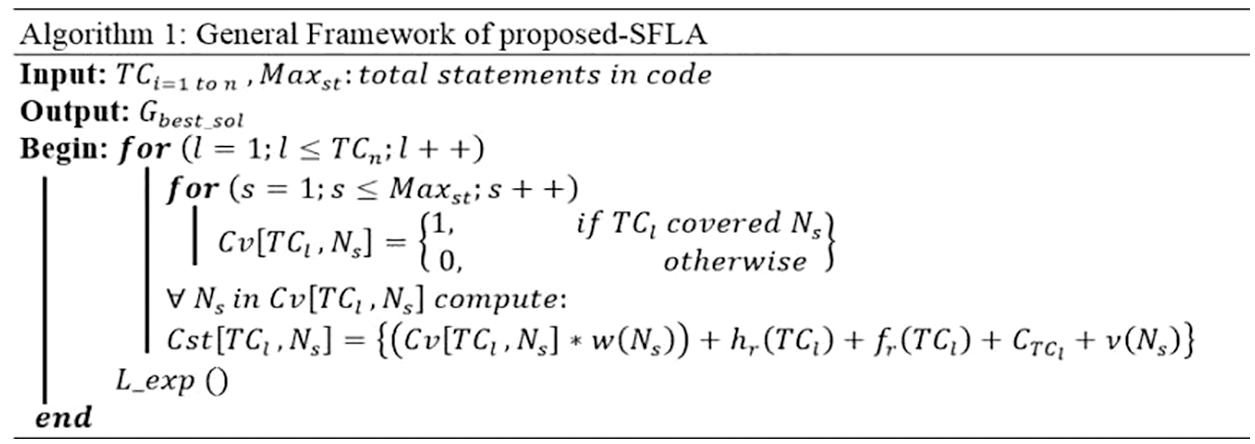
This study has integrated two more essential features that are often neglected during the assessment of data related to test statements and test cases, i.e., the recurrence ratio of test statements in independent test paths
Besides
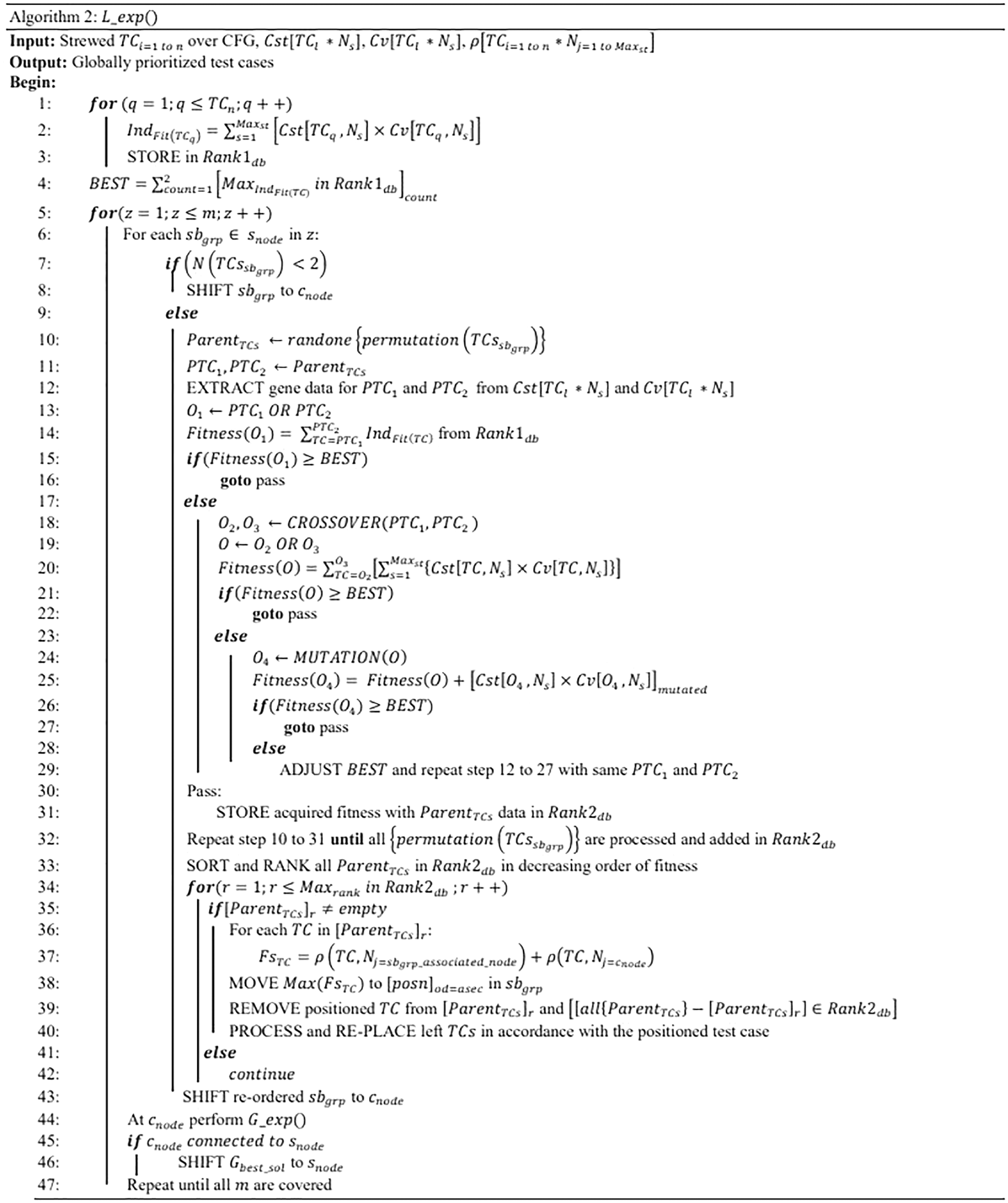

Primarily, this study considered a working module of tax-discount application as the test function (test function 1). On developing its graphical representation (i.e., CFG), it was perceived that the test function comes under a category of high complexity with

3.2.1 3.2.1 Construction of
The instructions presented in Algorithm 1 are considered for the emergence of

The

3.2.2 Local Exploration (memetic-based search)
The central working of the proposed-SFLA starts from here (Algorithm 2). Based on the current execution status, the test cases are plotted on the CFG. This insight would aid in comprehending how the test cases’ population is disseminated over the search space or the test flow that they are adapting (Fig. 3).
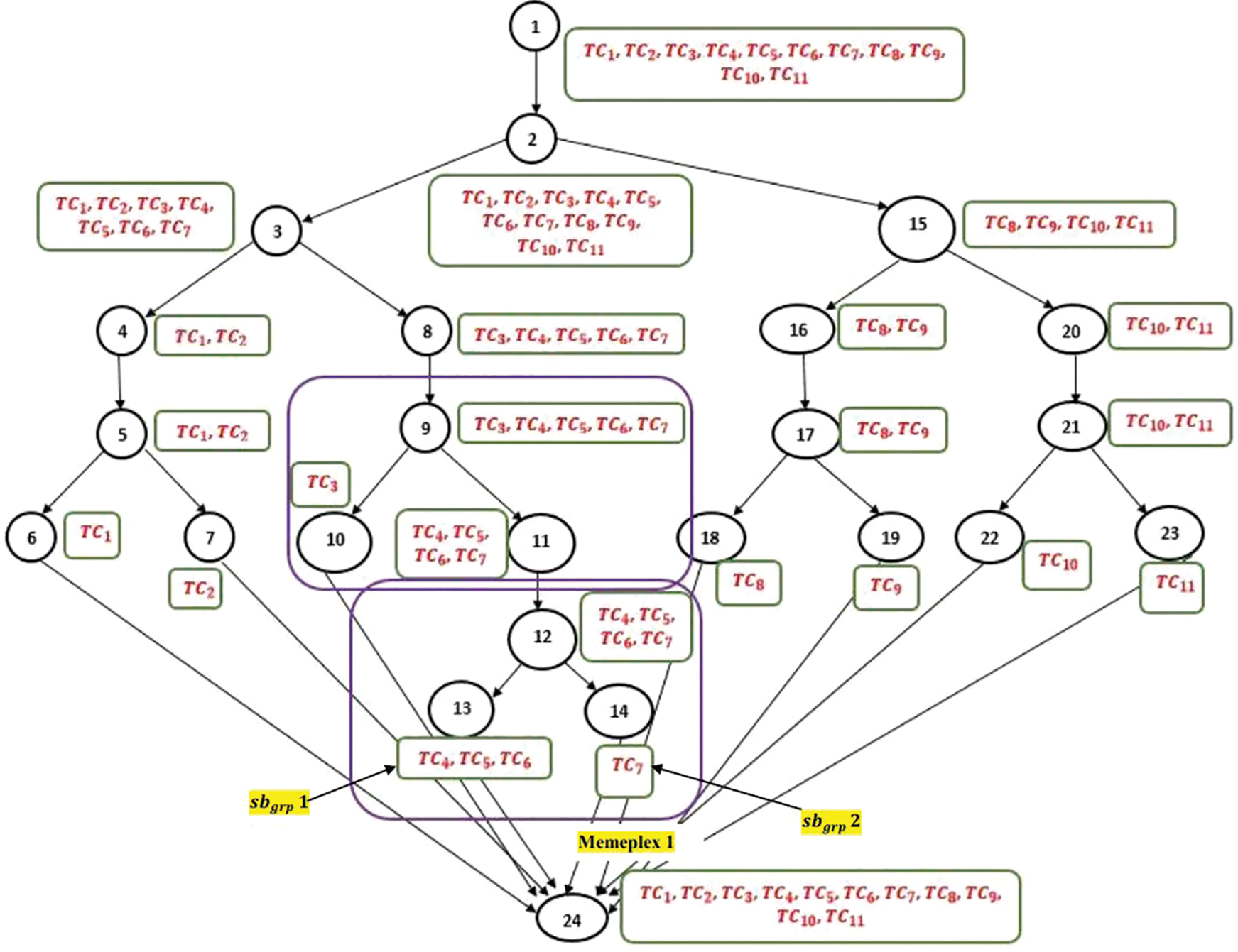
Figure 3: Scattered population of test cases over CFG of test function 1
The mapped CFG in Fig. 3 is scrutinized sequentially in a bottom-to-top manner. The parameter which needs much more concentration while tuning in conventional-SFLA was
Among the test pairs in sequence
In this stage, the swapping is conducted between the 1st bit of

Figure 4: Exemplar view of bit swapping between test case
After applying the ‘OR’ operator on the swapped versions of
The mutation is the slight alteration to the gene value to have a different trait compared to parents. To acquire this nature, the 21st bit of the chromosomal structure of the offspring test case (here
The genetic cycle is iterated until all the pairs inside

Figure 5: Representation of test cases’ movement during the local search phase
The pair
3.2.3 Global Exploration (PSO-based search)
Algorithm 3 is referred to globally re-order the locally procured solution from Algorithm 2. A temporary data storage
The positions of the test cases within the layers kept changing due to the enumerations

Figure 6: Information exchange and re-shuffling among the locally re-ordered test cases

Figure 7: Partial view of test cases advancing towards
This whole procedure from Algorithm 2 to Algorithm 3 is re-iterated until the search reaches at
4 Experimental Inferences and Discussion
This study addressed the following four research questions that prompted the experiments.
RQ1. How efficaciously can the proposed-SFLA re-ordered test cases uncover the faults in contrast to the existing techniques?
RQ2. What is the pace of test coverage by the re-ordered test sequence obtained from proposed-SFLA and other contrasting algorithms? Is the proposed-SFLA efficient enough in tracking the coverage at the earliest?
RQ3. Compared with the original order of the test cases, how productive is the prioritized order presented in the case study in terms of coverage and fault?
RQ4. Taking the case study into reference, does the proposed-SFLA generates encouraging outcomes concerning the APFD?
To answer RQ1 and RQ2, apart from test function 1, this study has considered 4 other test functions with high and medium-level complexities. The proposed-SFLA approach is compared with those algorithms that are highly stable in the domain of memetics or are not entirely approaching randomnesses, such as GA-infused-Multi-walk (Optimized Multi-walk) [5], Memetic algorithm [23], PSO [24], and Multi-walk [32].
Through the observations depicted in Fig. 8a, it is seen that the proposed-SFLA achieved the maximum fault rate at
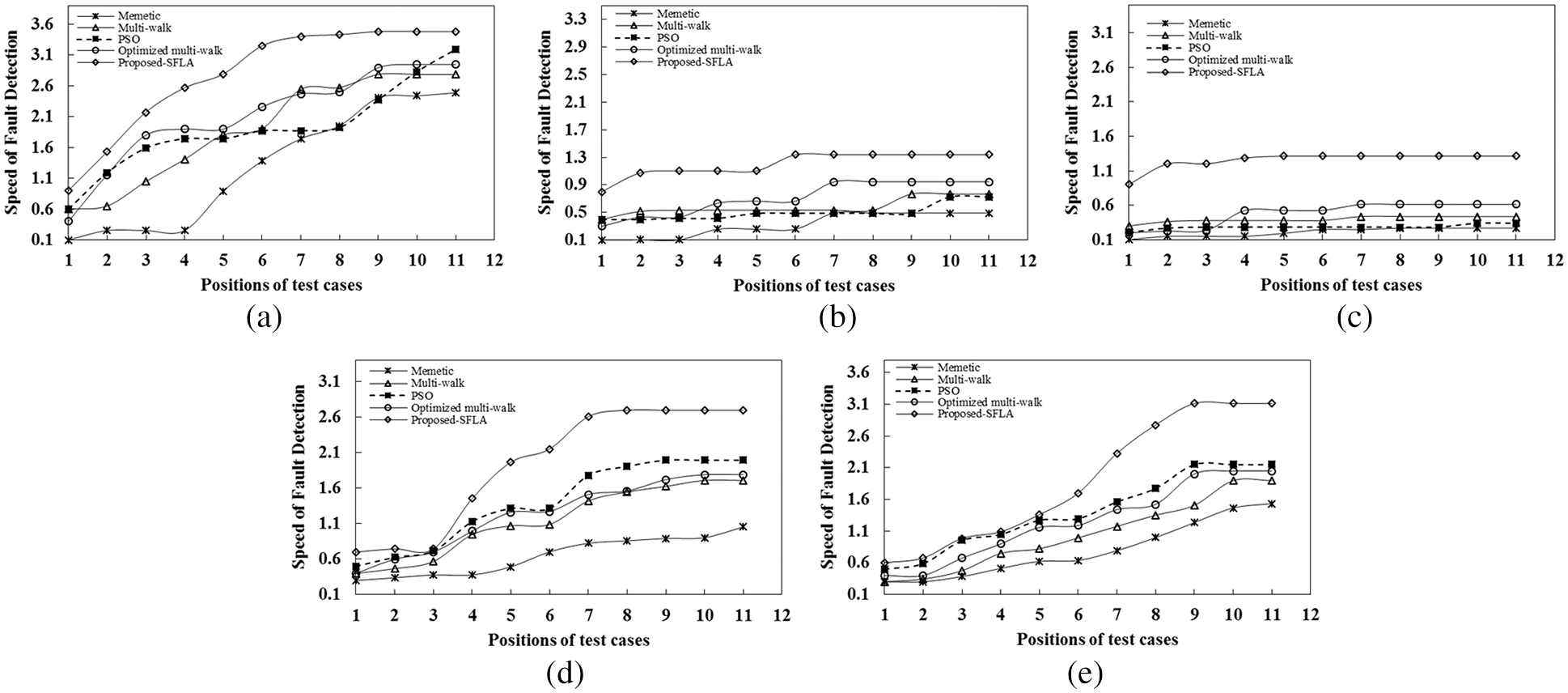
Figure 8: Graphs depicting the growth of fault detection rate among the re-ordered test cases
For cases stated in Figs. 8b and 8c, the fault detection rate by the proposed-SFLA is maximum at
According to the coverage statistic shown in Fig. 9a, the memetic approach [23] is again the worst performer since it retains only 70% of the coverage of test function when approximately 60% of the re-ordered test cases are executed. Optimized [5] and basic multi-walk [32] performed almost on the same scale, where the first secured the coverage rate of 75% and the latter 79%. PSO [24] appeared to be finer than these 3 algorithms since the coverage rate that it procured is 83% at
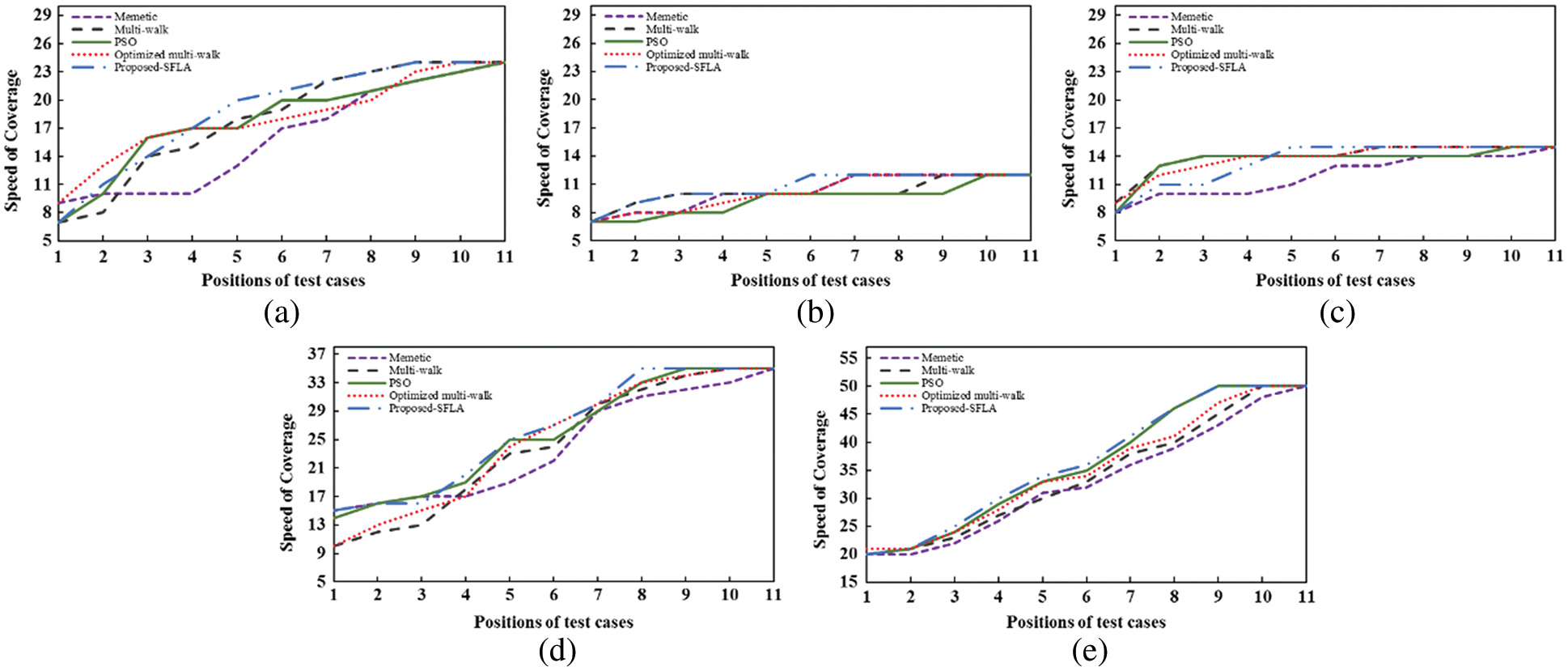
Figure 9: Graphs depicting the growth of coverage rate among the re-ordered test cases

It could be observed from Table 4 that in the case of moderate shieldedness, optimized multi-walk [5] is the second-best in satisfying the coverage and fault at the earliest. This further ensured that optimized multi-walk could be considered the finer option for test codes possessing high complexity and higher or moderate shieldedness effect among the test cases. However, there is no guarantee that the results achieved are optimal since randomness could also affect them in some instances.
With reference to the coverage and fault detection pace of the original order of the test cases and the prioritized order through the proposed-SFLA, Fig. 10 exhibits how the speed drastically changes at the peak, i.e., after

Figure 10: Comparative depiction between original test case order and prioritized test case order by proposed-SFLA for test function 1
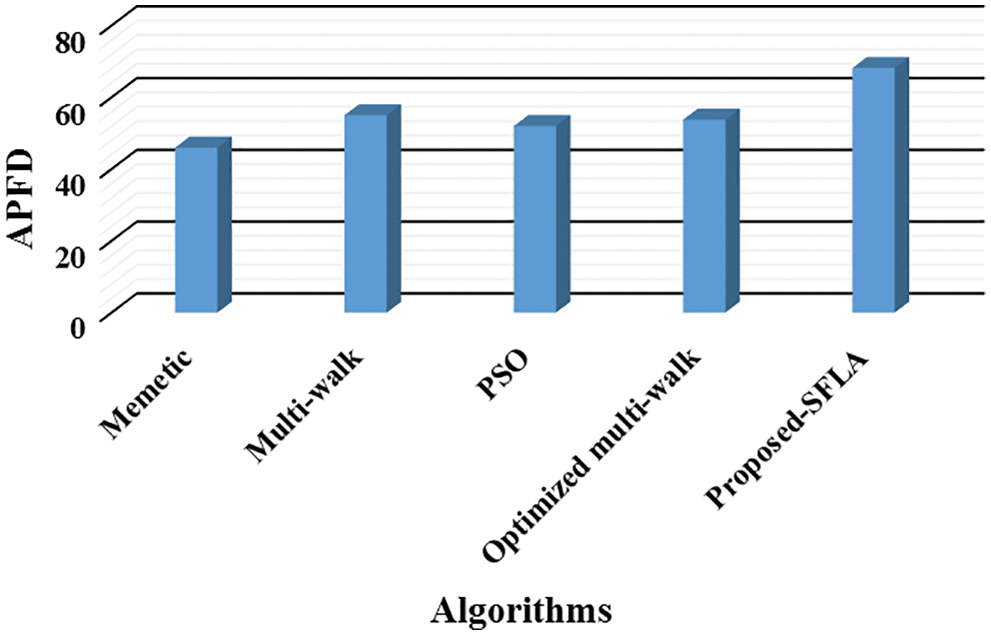
Figure 11: Comparative analysis among algorithms over evaluation metric (i.e. APFD) for test function 1
Maximization of either fault or coverage at the earliest is the necessitated prioritization goal in the studies approaching TCP. These studies, using some heuristics or meta-heuristic techniques, prioritize the test cases to attain the specified goal. However, with such a prioritization goal and the lack of multi-objectiveness, one or the other testing information related to test cases or test code gets compromised during TCP. Apart from that, previous research has concentrated their TCP techniques exclusively on the third level of testing, i.e., system. This study tries to shift this focus on the most vulnerable levels of testing, i.e., unit and integration, by proposing a natural memetics-inspired framework (i.e., SFLA) for TCP. The baseline structure of SFLA is infused with the critical parameters to have prioritized sequences of test cases at the unit and integration level of testing of SUT.
The experimental environment was configured to enhance the rate of test coverage and fault, both at the earliest in the prioritized sequence. It could be inferred from experimental data that
Since the
Funding Statement:The authors received no specific funding for this study.
Conflicts of Interest:The authors declare that they have no conflicts of interest to report regarding the present study.
References
1. S. Singhal, N. Jatana, B. Suri, S. Misra and L. Fernandez-Sanz, “Systematic literature review on test case selection and prioritization: A tertiary study,” Applied Sciences, vol. 11, no. 24, pp. 12121, 2021. [Google Scholar]
2. Y. Lou, J. Chen, L. Zhang and D. Hao, “Chapter one—a survey on regression test-case prioritization,” In: A. M. Memon (Ed.Advances in Computers, vol. 113, pp. 1–46, United States: Elsevier, 2019. [Google Scholar]
3. A. Gupta and R. P. Mahapatra, “Multifactor algorithm for test case selection and ordering,” Baghdad Science Journal, vol. 18, no. 2(Suppl.), pp. 1056–1075, 2021. https://doi.org/2021105610.21123/bsj. [Google Scholar]
4. H. Hemmati, “Chapter four—advances in techniques for test prioritization,” In: A. M. Memon (Ed.Advances in Computers, vol. 112, pp. 185–221, United States: Elsevier, 2019. [Google Scholar]
5. U. Geetha, S. Sankar and M. Sandhya, “Acceptance testing based test case prioritization,” Cogent Engineering, vol. 8, no. 1, pp. 1907013, 2021. [Google Scholar]
6. G. Rothermel, R. H. Untch, C. Chu and M. J. Harrold, “Prioritizing test cases for regression testing,” IEEE Transactions on Software Engineering, vol. 27, no. 10, pp. 929–948, 2001. [Google Scholar]
7. C. Hettiarachchi and H. Do, “A systematic requirements and risks-based test case prioritization using a fuzzy expert system,” in 2019 IEEE 19th Int. Conf. on Software Quality, Reliability and Security (QRS), Sofia, Bulgaria, pp. 374–385, 2019. [Google Scholar]
8. M. Mahdieh, S.-H. Mirian-Hosseinabadi, K. Etemadi, A. Nosrati and S. Jalali, “Incorporating fault-proneness estimations into coverage-based test case prioritization methods,” Information and Software Technology, vol. 121, no. 2, pp. 106269, 2020. [Google Scholar]
9. M. Khatibsyarbini, M. Isa, D. Jawawi and R. Tumeng, “Test case prioritization approaches in regression testing: A systematic literature review,” Information and Software Technology, vol. 93, no. 4, pp. 74–93, 2017. [Google Scholar]
10. A. Bajaj and O. P. Sangwan, “A survey on regression testing using nature-inspired approaches,” in 2018 4th Int. Conf. on Computing Communication and Automation (ICCCA), Greater Noida, India, pp. 1–5, 2018. [Google Scholar]
11. A. Bajaj and O. P. Sangwan, “A systematic literature review of test case prioritization using genetic algorithms,” IEEE Access, vol. 7, pp. 126355–126375, 2019. [Google Scholar]
12. M. Eusuff, K. Lansey and F. Pasha, “Shuffled frog-leaping algorithm: A memetic meta-heuristic for discrete optimization,” Engineering Optimization, vol. 38, no. 2, pp. 129–154, 2006. [Google Scholar]
13. B. Manaswini and A. Rama Mohan Reddy, “A Shuffled frog leap algorithm based test case prioritization technique to perform regression testing,” International Journal of Engineering and Advanced Technology (IJEAT), vol. 8, no. 5, pp. 671–674, 2019. [Google Scholar]
14. P. Vats, Z. Aalam, S. Kaur, A. Kaur and S. Kaur, “A multi-factorial code coverage based test case selection and prioritization for object oriented programs,” in ICT Systems and Sustainability, Singapore: Springer, pp. 721–731, 2021. [Google Scholar]
15. C. Lu, J. Zhong, Y. Xue, L. Feng and J. Zhang, “Ant colony system with sorting-based local search for coverage-based test case prioritization,” IEEE Transactions on Reliability, vol. 69, no. 3, pp. 1004–1020, 2020. [Google Scholar]
16. W. Fu, H. Yu, G. Fan and X. Ji, “Coverage-based clustering and scheduling approach for test case prioritization,” IEICE Transactions on Information and Systems, vol. E100.D, no. 6, pp. 1218–1230, 2017. [Google Scholar]
17. M. A. Rahman, M. A. Hasan and M. S. Siddik, “Prioritizing dissimilar test cases in regression testing using historical failure data,” International Journal of Computer Applications, vol. 180, no. 14, pp. 1–8, 2018. [Google Scholar]
18. P. Kandil, S. Moussa and N. Badr, “Cluster-based test cases prioritization and selection technique for agile regression testing,” Journal of Software: Evolution and Process, vol. 29, no. 6, pp. e1794, 2017. [Google Scholar]
19. T. Afzal, A. Nadeem, M. Sindhu and Q. uz Zaman, “Test case prioritization based on path complexity,” in 2019 Int. Conf. on Frontiers of Information Technology, Islamabad, Pakistan, pp. 363–3635, 2019. [Google Scholar]
20. D. Di Nucci, A. Panichella, A. Zaidman and A. De Lucia, “A test case prioritization genetic algorithm guided by the hypervolume indicator,” IEEE Transactions on Software Engineering, vol. 46, no. 6, pp. 674–696, 2020. [Google Scholar]
21. P. K. Gupta, “K-step crossover method based on genetic algorithm for test suite prioritization in regression testing,” JUCS—Journal of Universal Computer Science, vol. 27, no. 2, pp. 170–189, 2021. [Google Scholar]
22. D. Mishra, N. Panda, R. Mishra and A. A. Acharya, “Total fault exposing potential based test case prioritization using genetic algorithm,” International Journal of Information Technology, vol. 11, no. 4, pp. 633–637, 2018. [Google Scholar]
23. F. M. Nejad, R. Akbari and M. M. Dejam, “Using memetic algorithms for test case prioritization in model based software testing,” in 2016 1st Conf. on Swarm Intelligence and Evolutionary Computation (CSIEC), Bam, Iran, pp. 142–147, 2016. [Google Scholar]
24. E. Ashraf, K. Mahmood, T. A. Khan and S. Ahmed, “Value based PSO test case prioritization algorithm,” International Journal of Advanced Computer Science and Applications, vol. 8, no. 1, pp. 389–394, 2017. [Google Scholar]
25. A. Samad, H. B. Mahdin, R. Kazmi, R. Ibrahim and Z. Baharum, “Multiobjective test case prioritization using test case effectiveness: Multicriteria scoring method,” Scientific Programming, vol. 2021, pp. e9988987, 2021. [Google Scholar]
26. A. Bajaj and O. P. Sangwan, “Discrete cuckoo search algorithms for test case prioritization,” Applied Soft Computing, vol. 110, no. 3, pp. 107584, 2021. [Google Scholar]
27. M. M. Öztürk, “A bat-inspired algorithm for prioritizing test cases,” Vietnam Journal of Computer Science, vol. 5, no. 1, pp. 45–57, 2018. [Google Scholar]
28. M. Khatibsyarbini, M. A. Isa, D. N. A. Jawawi, H. N. A. Hamed and M. D. Mohamed Suffian, “Test case prioritization using firefly algorithm for software testing,” IEEE Access, vol. 7, pp. 132360–132373, 2019. [Google Scholar]
29. R. Mukherjee and K. S. Patnaik, “Prioritizing JUnit test cases without coverage information: an optimization heuristics based approach,” IEEE Access, vol. 7, pp. 78092–78107, 2019. [Google Scholar]
30. Y. Zhu, E. Shihab and P. C. Rigby, “Test re-prioritization in continuous testing environments,” in 2018 IEEE Int. Conf. on Software Maintenance and Evolution (ICSME), Madrid, Spain, pp. 69–79, 2018. [Google Scholar]
31. J. A. Prado Lima and S. R. Vergilio, “Test case prioritization in continuous integration environments: A systematic mapping study,” Information and Software Technology, vol. 121, pp. 106268, 2020. [Google Scholar]
32. Z. Chi, J. Xuan, Z. Ren, X. Xie and H. Guo, “Multi-level random walk for software test suite reduction,” IEEE Computational Intelligence Magazine, vol. 12, no. 2, pp. 24–33, 2017. [Google Scholar]
Cite This Article
 Copyright © 2023 The Author(s). Published by Tech Science Press.
Copyright © 2023 The Author(s). Published by Tech Science Press.This work is licensed under a Creative Commons Attribution 4.0 International License , which permits unrestricted use, distribution, and reproduction in any medium, provided the original work is properly cited.


 Submit a Paper
Submit a Paper Propose a Special lssue
Propose a Special lssue View Full Text
View Full Text Download PDF
Download PDF Downloads
Downloads
 Citation Tools
Citation Tools